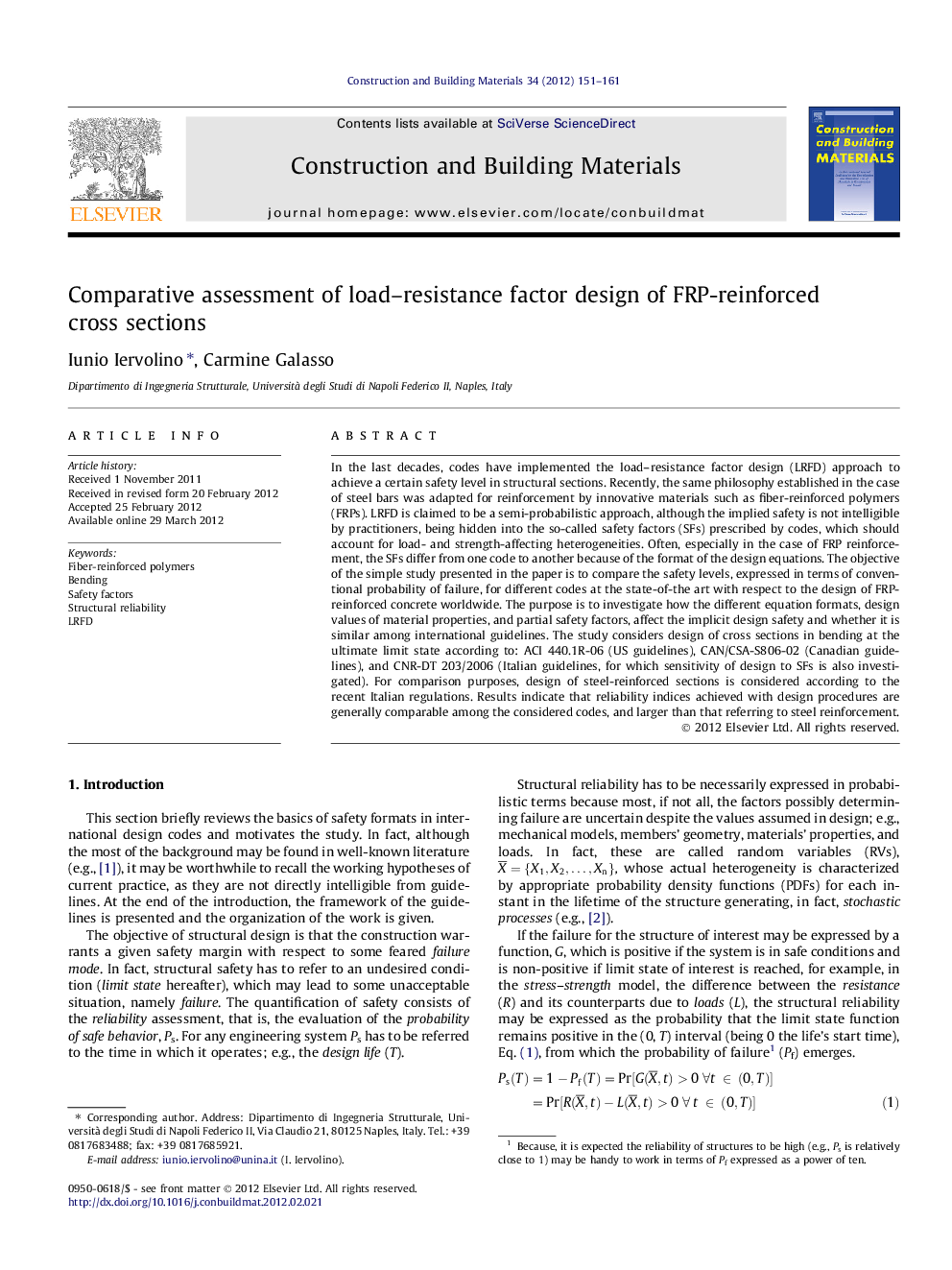| Article ID | Journal | Published Year | Pages | File Type |
|---|---|---|---|---|
| 258981 | Construction and Building Materials | 2012 | 11 Pages |
In the last decades, codes have implemented the load–resistance factor design (LRFD) approach to achieve a certain safety level in structural sections. Recently, the same philosophy established in the case of steel bars was adapted for reinforcement by innovative materials such as fiber-reinforced polymers (FRPs). LRFD is claimed to be a semi-probabilistic approach, although the implied safety is not intelligible by practitioners, being hidden into the so-called safety factors (SFs) prescribed by codes, which should account for load- and strength-affecting heterogeneities. Often, especially in the case of FRP reinforcement, the SFs differ from one code to another because of the format of the design equations. The objective of the simple study presented in the paper is to compare the safety levels, expressed in terms of conventional probability of failure, for different codes at the state-of-the art with respect to the design of FRP-reinforced concrete worldwide. The purpose is to investigate how the different equation formats, design values of material properties, and partial safety factors, affect the implicit design safety and whether it is similar among international guidelines. The study considers design of cross sections in bending at the ultimate limit state according to: ACI 440.1R-06 (US guidelines), CAN/CSA-S806-02 (Canadian guidelines), and CNR-DT 203/2006 (Italian guidelines, for which sensitivity of design to SFs is also investigated). For comparison purposes, design of steel-reinforced sections is considered according to the recent Italian regulations. Results indicate that reliability indices achieved with design procedures are generally comparable among the considered codes, and larger than that referring to steel reinforcement.
► Design formats for design of FRP-reinforced concrete were compared. ► US, Canadian, and Italian codes were considered. ► Steel-reinforced-concrete was also considered as a benchmark. ► Results indicate comparable reliability indices implied by different codes. ► Sensitivity of safety to partial factors, for Italian code, was also addressed.
